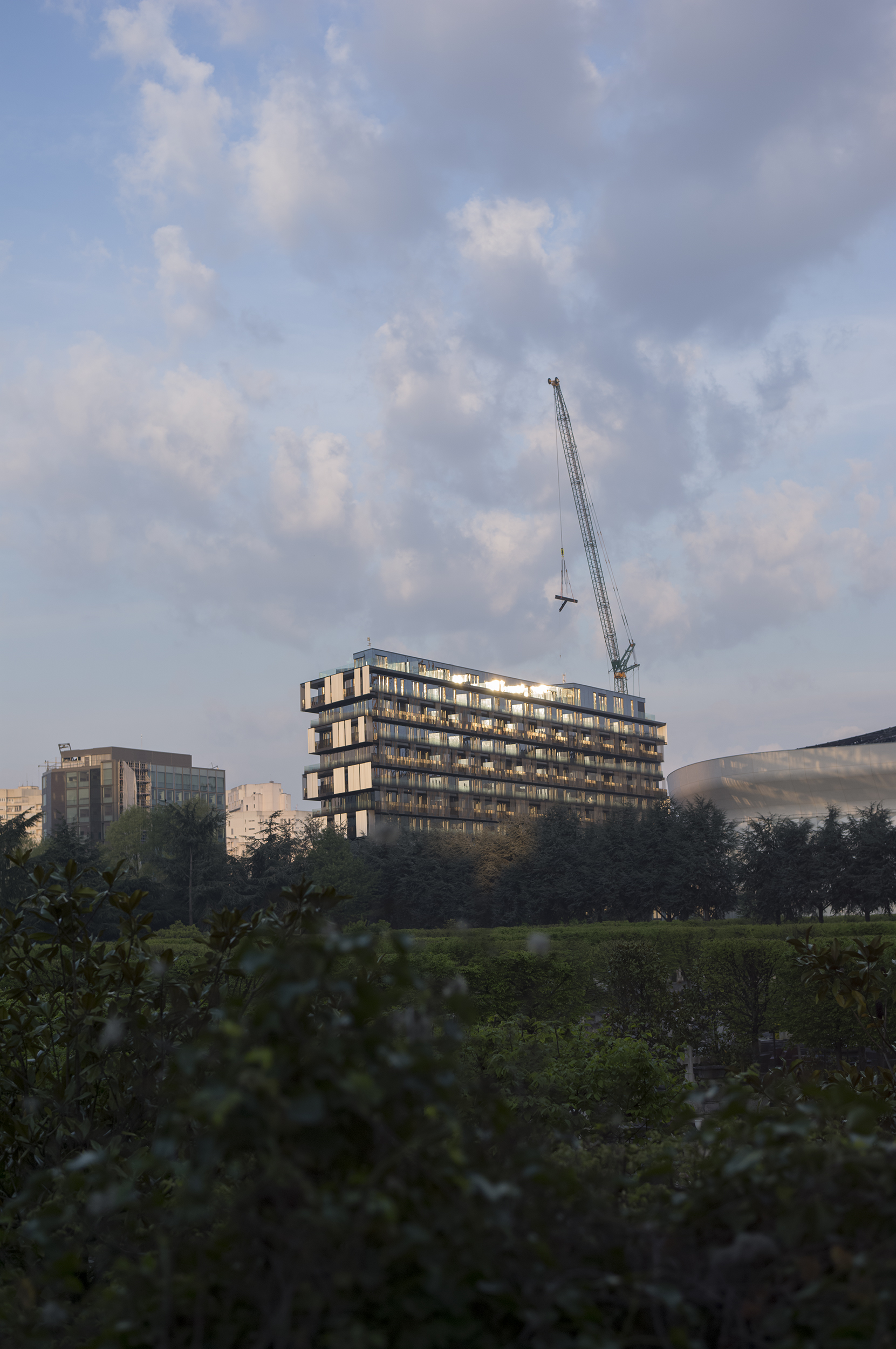L'Îlot 19
Îlot 19 is the first new housing to have been built in La Défense for 30 years. It is radical in its approach to mixed-tenure residential design: while affordable housing is often designed to look simple and inexpensive, Ilot 19 is a highly crafted building that, regardless of affluence, provides an empowering living experience through its structure, massing, circulation and materials.
Îlot 19 captures the eye with its exceptional location and takes advantage of open views of the city from three sides. Located within Les Jardins de l’Arche – an urban project initiated by the development organisation EPADESA – it has invigorated the space immediately west of La Grande Arche. To the south, it fronts the Axe Historique (historical axis) which cuts through Paris and defines a grand open space through the city between the Louvre Museum and La Défense. Beyond the Promenade de l’Arche it overlooks Puteaux cemetery and borders Neuilly cemetery in the north and a new arena in the east.
Through its combination of private apartments, student lodging, commercial and public spaces, Îlot 19 aims for the social cohesion of the pre-Haussmann building typology that accommodated the bourgeoisie, civil servants, low-wage employees and students in a single building. Within a shallow slab, the apartments – irrespective of their tenure type – are arranged to be laterally accessed in pairs by an elevator and stair core.
Residential units are arranged within a 12m-deep linear slab that grows to a deeper three-storey plinth between the level of new public space (the promenade) and the Neuilly cemetery. Commercial spaces and student housing are located in the lower levels to animate the esplanade of the Jardins de l’Arche. The upper levels provide 91 dual-aspect apartments (72 are affordable and nine are social housing apartments reserved for inhabitants of Nanterre), and one level of maisonette penthouses.
The absence of an access corridor allows residents with different habits and lifestyles to cohabit a single building without disturbing one another. Moreover the lateral arrangement is more environmentally sustainable as the resulting dual-aspect apartments benefit from natural cross ventilation and plenty of natural light and views of the city at both ends.
On the southern exposure the floors are tapered by two degrees in alternate directions to give an oblique view of the Axe Historique. This move also generates a stepped section, which means that private outdoor spaces on alternate floors are differentiated into either protruding or recessed forms. The protruding open spaces function as loggias, clad with aluminium sliding shutters for privacy and shade, while the recessed open spaces, which are shaded by the floor above, are left open to function as balconies. The stepped section of the building therefore reduces the amount of material needed for shading and contributes to environmental sustainability.
The design aims for inclusivity so that both student rooms and private residences benefit from choice and privacy. Private outdoor spaces at each end of the apartments are provided throughout the building irrespective of the tenure type. Thanks to the tapered floor profile, they range in size, shape and orientation from one end of the building to the other. All apartments and student rooms are clad with full height glazing and sliding aluminium shutters. Consequently, a student room is given the same interface with its context as one of the simplex apartments or penthouses, removing the visual cues of affordability from the urban realm they share.
The design of Îlot 19 supports the future interests of residents by using materials that will need very little maintenance: the exterior of anodised aluminium, glass, concrete and hardwood flooring will age well without the need for cleaning. In order to empower residents to reconfigure their interiors at their own pace, the structure of the building is located along the party wall between neighbours, the vertical cores and the façade leaving the apartment interiors free from fixed, load-bearing structure. Just a few months after moving in, residents had already begun to adapt their apartments by sub-dividing the rooms to suit their needs.





